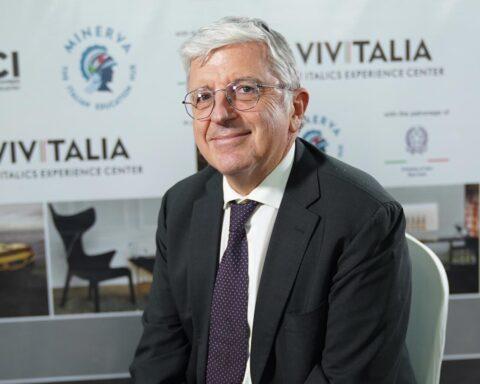The 27th Conference of the 198 Parties to the United Nations Framework Convention on Climate Change (COP27), that took place in the Egyptian Red Sea resort town of Sharm el-Sheikh, concluded on November 20, 2022, with a historic decision to establish and operationalize a loss and damage fund. Welcoming the decision and calling the fund essential, UN Secretary-General António Guterres noted that more needs to be done to drastically reduce emissions.
“The world still needs a giant leap on climate ambition. The red line we must not cross is the line that takes our planet over the 1.5°C temperature limit,” he stressed, urging the world not to relent “in the fight for climate justice and climate ambition. We can and must win this battle for our lives”.
Speaking earlier at the opening of the summit, he called for a Climate Solidarity Pact and sought the coming together of the world’s richest and poorest countries to accelerate the transition from fossil fuels. In a blistering address, the UN chief warned that the planet was heading towards irreversible “climate chaos” and sought this pact.
“It is either a Climate Solidarity Pact—or a Collective Suicide Pact,” he said, adding, “Humanity has a choice: cooperate or perish.” He later tweeted, “I have just warned global leaders at #COP27: We are on a highway to climate hell with our foot on the accelerator. Our planet is fast approaching tipping points that will make climate chaos irreversible. We need urgent #ClimateAction.”
Time for reparations
Starting a loss and damage fund was lauded as it was the first time countries recognised the need for finance to respond to loss and damage associated with the catastrophic effects of climate change and agreed to the establishing of a fund and the necessary funding arrangements. Although the operational details of the fund need to be hammered out over the coming year about who should pay into the fund, where the money will come from and which countries will benefit, it’s “an important step towards justice,” said the UN Secretary-General.
A ‘transitional committee’ will make recommendations on how to operationalise both the new funding arrangements and the fund for consideration and adoption at COP28 next year. The first meeting of the transitional committee is expected to take place before the end of March 2023.
India welcomed the establishment of the Loss and Damages Fund (L&D) meant to compensate the most vulnerable countries for climate change-induced damages they would suffer. India, however, clarified that it would not be its responsibility to contribute to the proposed fund, it will rather stake its claim to it to cope with the impacts of climate change. The agreement to establish such a fund is seen as an appropriate step in the long journey towards climate justice.
Despite the pact on a loss and damage fund, not much was achieved at the summit with the rich nations still ignoring the concerns raised by the poor and developing nations. India’s call for a phase-down of all fossil fuels was ignored in the concluding statement of the Presidency of the 27th Conference of Parties (COP27) to the United Nations Framework Convention on Climate Change (UNFCCC).
From November 6 to 20, COP27 held high-level and side events, key negotiations, and press conferences, hosting more than 100 heads of state and government, over 35,000 participants and numerous pavilions showcasing climate action around the world and across different
sectors. India expressed its displeasure over coal being singled out in the cover decision. The statement instead called for accelerated efforts to phase out unabated coal power and inefficient fossil fuel subsidies.The United Kingdom and Norway also called for a phase-out of all fossil fuels at the Heads of Delegation (HoD) meeting held hours after the draft text was released.
Saudi Arabia was not on board, stating that any reference to fossil fuels was unacceptable. “The text failed to mention the need to phase out all forms of fossil fuel,” Lorraine Chiponda, Facilitator, Africa Climate Movement of Movements, said at a press briefing. It was also suggested that the Egypt Presidency could be blocking its inclusion in the text. “Egypt is the largest producer and consumer of fossil fuel,” Seve Paeniu, minister of finance, Tuvalu, said. This could explain the resistance, he added.
Despite the pact on a loss and damage fund, not much was achieved at the summit with the rich nations still ignoring the concerns raised by the poor nations

India was leading the push for the COP27 climate summit to conclude with a decision on phasing down all fossil fuels, a move that would expand the focus from just coal but was likely to raise strong concerns from oil- and gas-reliant countries. Indian negotiators formally called on the Egyptian Presidency of climate talks for the expanded language to be included in the cover text, a political statement of how countries will seek to tackle the climate crisis, according to people familiar with the matter. The push stemmed largely from the coal-dependent country’s desire to not be singled out for its dependence on dirty fossil fuel.
All this effort by Indian negotiators saw the country emerge as a key actor at the international climate negotiation table. As India stood strong on its suggestions, it also made it clear that it remains committed to the underlying issues of global justice and equity when it objected to the use of terms such as “major emitters” and “top emitters” in the cover text of the summit. These terms would have implied that all top emitters, including India and China, must make major emission cuts to limit global average warming to 1.5°C and not just the rich economies which have been historically responsible for climate change.
Minister for Environment, Forest and Climate Change Bhupinder Yadav, who headed the Indian delegation at COP27, pointed out that these terms were an attempt to undermine the principle of Common but Differentiated Responsibilities and Respective Capabilities (CBDR-RC). Indian negotiators also stressed the fact that this is still an unequal world with glaring disparities in energy usage, emissions, and incomes among countries. They argued for the provision for enhanced climate finance for poorer economies to cope with the impacts of climate change while agreeing to effect emission reduction based on respective capabilities.
As such India co-led the Climate Finance talks at the summit, which was a critical aspect of the convention’s agenda given the unfulfilled Paris commitment of $100 billion per year from 2020 onwards by developed nations. India and the BRICS nations opposed the Carbon Border Adjustment Mechanism proposed by the European Union to tax carbon intensive products such as cement, fertilisers, steel and so on from 2026 onwards. They argued that such taxes could result in market distortion and aggravate trust deficit amongst parties and must be avoided.
India and other BRICS countries are opposed to discriminatory and unfair market ‘solutions’ as they lead to balance of trade issues between developed and developing economies. They rather insist that developed economies should show leadership by fulfilling their finance and emission reduction commitments. New pledges, totalling more than $230 million, were made to the Adaptation Fund at COP27. These pledges will help many more vulnerable communities adapt to climate change through concrete adaptation solutions.
COP27 President Sameh Shoukry announced the Sharm el-Sheikh Adaptation Agenda, enhancing resilience for people living in the most climate-vulnerable communities by 2030. UN Climate Change’s Standing Committee on Finance was requested to prepare a report on doubling adaptation finance for consideration at COP28 next year.
BRICS countries are opposed to discriminatory and unfair market ‘solutions’ as they lead to balance of trade issues

Climate finance
The cover decision, known as the Sharm el-Sheikh Implementation Plan, highlights that a global shift to a low-carbon economy is expected to require investments of at least $4-6 trillion a year. Delivering such funding will require a swift and comprehensive transformation of the financial system and its structures and processes, engaging governments, central banks, commercial banks, institutional investors, and other financial actors.
Developing and emerging countries would need investments beyond $2 trillion annually by 2030 if the world is to stop the global warming juggernaut and cope with its impacts. According to a UN-backed report released at COP27, a trillion dollars for this fight by the developing nations should come from rich countries, investors and multilateral development banks.
However, the analysis commissioned by Britain and Egypt (hosts, respectively, of the 2021 UN climate summit in Glasgow and COP27 at the Red Sea resort) kept China out of this list. The report, released ahead of talks on climate change finance, highlights various funding requirements to cut emissions, boost resilience, deal with damage from climate change and restore nature and land.
“The world needs a breakthrough and a new roadmap on climate finance that can mobilise the $1 trillion in external finance that will be needed by 2030 for emerging markets and developing countries other than China,” said the report, while adding that the total annual investment requirement of developing countries would hit $2.4 trillion by 2030, with half coming from external financing and the rest from public and private sources in those countries. Current investment stands at around $500 million, it said.
The new 100-page analysis, “Finance for Climate Action”, is an investment blueprint for greening the global economy quickly enough to meet the Paris climate treaty goals of capping the rise in global temperatures below 2°C, and at 1.5°C if possible.
The lead writer of the report, economist Nicholas Stern, said, “Rich countries should recognise that it is in their vital self-interest—as well as a matter of justice given the severe impacts caused by their high levels of current and past emissions—to invest in climate action in emerging markets and developing countries.” He had also authored a landmark report on the economics of climate change.
Vulnerability hotspots—areas with the highest susceptibility to being adversely affected by climate-driven hazards—are home to 1.6 billion people, a number projected to double by 2050, a report has said. The report, “10 New Insights in Climate Science 2022”, brought out by Future Earth, The Earth League and World Climate Research Programme, identifies vulnerability hotspots in Central America, the Sahel, Central and East Africa, the Middle East, and across the breadth of Asia.

The potential to adapt to climate change is not limitless: people and ecosystems in different places across the world are already confronted with limits to adaptation, and if the planet warms beyond 1.5°C or even 2°C, more widespread breaching of adaptation limits is expected. Hence, adaptation efforts cannot substitute ambitious mitigation, it says.
The rising frequency and intensity of extreme weather events related to climate change, as well as its slow-onset impacts, will increasingly drive involuntary migration and displacement. These impacts can also render many people unable to adapt by moving out of harm’s way. Hence, anticipatory approaches to assist climate-related mobility and minimise displacement are essential in the face of climate change, the report says.
At COP27, four initiatives to urgently address the transformation of agrifood systems were also identified on the Adaptation and Agriculture thematic day, which focused on how the world will feed eight billion people. Egypt’s COP27 Presidency and the Food and Agriculture Organisation (FAO) also launched the Food and Agriculture for Sustainable Transformation or FAST. The new initiative will increase climate finance contributions for agriculture and food systems to support the most vulnerable communities.

Four initiatives—Food and Agriculture for Sustainable Transformation (FAST), Climate Responses for Sustaining Peace (CRSP), Decent Life for a Climate Resilient Africa and Initiative on Climate Action and Nutrition (I-CAN)—will urgently address the transformation of agrifood systems, the integration of climate responses to peace and security, the improvement of the quality of life of the most vulnerable in Africa by 2030, and delivery of healthy diets, respectively, a statement said.
Some other key takeaways from COP27 were that countries reaffirmed their commitment to limit global temperature rise to 1.5°C above pre-industrial levels. That means the global economy must “mitigate” climate change — in other words, we must reduce or prevent the emission of greenhouse gases to get us to where science says we need to be by 2030. In line with that, a mitigation work programme was established in Sharm el-Sheikh, aimed at urgently scaling up mitigation ambition and implementation. The work programme will start immediately and continue until 2026 when there will be a review to consider its extension.
The world is in a critical decade for climate action. The UN’s Intergovernmental Panel on Climate Change says limiting warming to around 1.5°C requires global greenhouse gas emissions to peak before 2025 at the latest, and be reduced by 43% by 2030. That’s seven short years from now.
However, the world is currently off-course in keeping 1.5°C within reach. A stark report from UN Climate Change shows implementation of current pledges by national governments puts the world on track for a 2.5°C warmer world by the end of the century. At COP27, governments were also requested to once again revisit and strengthen the 2030 targets in their national climate plans by the end of 2023, as well as accelerate efforts towards the phase-down of unabated coal power and phase out inefficient fossil fuel subsidies. Governments stressed the importance of a clean energy mix, including low-emission and renewable energy as part of diversifying energy sources and systems.
In 2023, countries will be expected to come to the table with stronger and more ambitious climate plans than they did this year. These plans will be submitted to the UN Climate Change secretariat throughout 2023. Toward the end of next year, the secretariat will analyse the plans to see how closely (or not) those plans keep the 1.5°C limit in reach.
At COP27, four initiatives to urgently address the transformation of agrifood systems were also identified on the Adaptation and Agriculture thematic day
Holding businesses and institutions to account
This new phase of implementation also means a new focus on accountability when it comes to the commitments made by sectors, businesses and institutions. “There is absolutely no point putting ourselves through all that we’ve just gone through if we’re going to participate in an exercise of collective amnesia the moment the cameras move on,” said Simon Stiell, UN climate change executive secretary, who promised a new focus on accountability during his opening speech at COP27.
Another key outcome resulting from various decisions on climate finance is a call for developed parties to provide resources for the second replenishment of the Green Climate Fund. All countries welcomed the recent pledges made to the Adaptation Fund ($211.58 million), the Least Developed Countries Fund ($70.6 million), and the Special Climate Change Fund ($35.0 million).
At COP27, deliberations continued on setting a ‘new collective quantified goal on climate finance’ in 2024, taking into account the needs and priorities of developing countries. The package of decisions adopted at COP27 has a strong focus on implementation—they aim to strengthen action by countries to cut greenhouse gas emissions and adapt to the inevitable impacts of climate change, as well as boost the support of finance, technology and capacity building needed by developing countries.
Notably, nations resolved to make the transition to low-emission and climate-resilient development ambitious, just and equitable. They went one step further at COP27 by deciding to establish a work programme on ‘just transition,’ which is expected to build on and complement the work to urgently scale up mitigation ambition and implementation. However, all the participants agreed that a lot still needs to be done, mostly by the developed economies, to ensure that the earth survives.

























